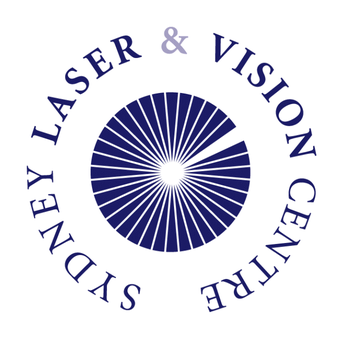LASIK vs SMILE - ask Dr David Robinson eye surgeon
Thinking about laser eye surgery? Not sure what the best technique is? In a world where everyone claims that their product is best, it can be hard to find reliable information. This post compares LASIK and SMILE so you can go to your initial consultation armed with the facts.
A potted history of laser eye surgery
LASIK came on the scene in the early 1990s and was a refinement of the earlier PRK procedure. PRK is still in use today and, while it gives comparable results to more modern procedures in terms of safety and accuracy, its big drawback is the recovery from surgery, which is delayed and uncomfortable (even painful, especially the first few days).
LASIK addressed these issues by the creation of a flap of tissue that is folded back so the laser can reshape the underlying tissue. It quickly became the world’s most popular procedure and retains that title 25 years on, despite the recent arrival on the scene of SMILE.
SMILE is a much newer procedure, being introduced to Australia within the last 5 years and is not widely available at this stage. It uses a femtosecond laser to separate a precisely-shaped disc of tissue from within the cornea. This tissue is then removed through a keyhole incision.
Which procedure is best for my eyes?
An experienced surgeon is the best person to advise you on the most appropriate procedure for your particular eyes, but there are a few facts about the two techniques you should be aware of.
Can both procedures correct my prescription?
LASIK corrects short-sightedness, long-sightedness and astigmatism in the range +4 to -10.
SMILE can correct short-sightedness (myopia) in the range -2 to -10. If you are long-sighted (also called hyperopic) or if you are mildly short-sighted (less than -2), SMILE is not an option.
How can I get the most accurate results?
In a review of the clinical literature on LASIK and SMILE over almost 4 years,1, 2 LASIK was clearly shown to provide better uncorrected vision post-operatively, compared to SMILE.
One of the most compelling results compared the uncorrected distance vision of patients after surgery, with LASIK clearly ahead.
There was also a higher chance of being under-corrected with SMILE (leaving a residual error of both myopia and astigmatism at 6 months post-operatively).
LASIK was also associated with a higher chance than SMILE of gaining extra lines of vision on the test chart compared to vision with glasses before surgery.
Getting rid of reading glasses?
If your distance vision is normal and you only wear reading glasses, SMILE is not an option for getting rid of your glasses. LASIK can be used to deliberately create some short sight in your non-dominant eye, allowing reading without glasses for many day-to-day activities.
Need to get back to work within a day or two?
LASIK has an incredibly quick visual recovery, with most patients reading the bottom line of the eye test chart (or 20-20 vision) within hours of surgery. Once your post-operative visit is completed (usually the morning after surgery), you can drive to work, and get back to most activities. (Swimming must be avoided for 2 weeks and contact sports for a month).
It takes a bit longer for the vision to recover after SMILE (although not as long as with PRK). The layers of the cornea have to knit together and there is light scatter from the interface within the cornea. This means that vision is usually not good enough to drive for at least a few days or sometimes longer.
What if I need an enhancement?
Enhancement surgery rates are similar between the two procedures, at about 2 to 5%, depending on the surgeon and your original refractive error. But the technique varies. If you need a touch up after LASIK, it’s usually just a matter of relifting the flap and retreating the underlying cornea. The SMILE technique cannot be used to make small readjustments, as the minimum treatment is -2. This means if you do need a retreatment after SMILE, you will need to have a PRK procedure, which generally involves a much longer recovery and can be very uncomfortable.
What if I have dry eyes?
All laser vision correction causes disruption to the tear film and temporary dry eyes. LASIK is associated with more impact on corneal nerves than PRK or SMILE, leading to less sensitive eyes for weeks to months after surgery. This loss of sensation results in less watery tear production, and drier eyes.
For eyes that are normal before surgery, this is rarely an issue, but if you already suffer from dry eyes prior to surgery, PRK or SMILE may be a better choice.
LASIK has been around for a long time and has been tried and tested and found to be a safe, accurate and comfortable procedure. Over the decades, our understanding of this procedure has grown, with the result that serious complications now very rarely seen.
SMILE has yet to prove itself long term. It has a more limited treatment range and slower visual recovery and, although initial results in terms of safety seem comparable to LASIK, it has been shown in a number of studies to be less accurate than LASIK.
Dr David Robinson eye doctor is an expert ophthalmologist who has performed over 8000 LASIK Laser Vision correction procedures.
Contact Sydney Laser and Vision Centre to book a consultation with Dr David Robinson eye surgeon for a consultation on 1800 25 2020
References
1. Sandoval H.P, Donnenfeld E.D, Kohnen T, Lindstrom R.L, Potvin R, Tremblay D.M, Solomon K.D. Modern Laser in situ keratomileusis outcomes. J Cataract Refract Surg 2016; 42:1224-1234
2. Pinero D.P, Teus M.A. Clinical outcomes of small-incision lenticule extraction and femtosecond laser-assisted wavefront-guided laser in situ keratomileusis. J Cataract Refract Surg 2016; 42:1078-1093

